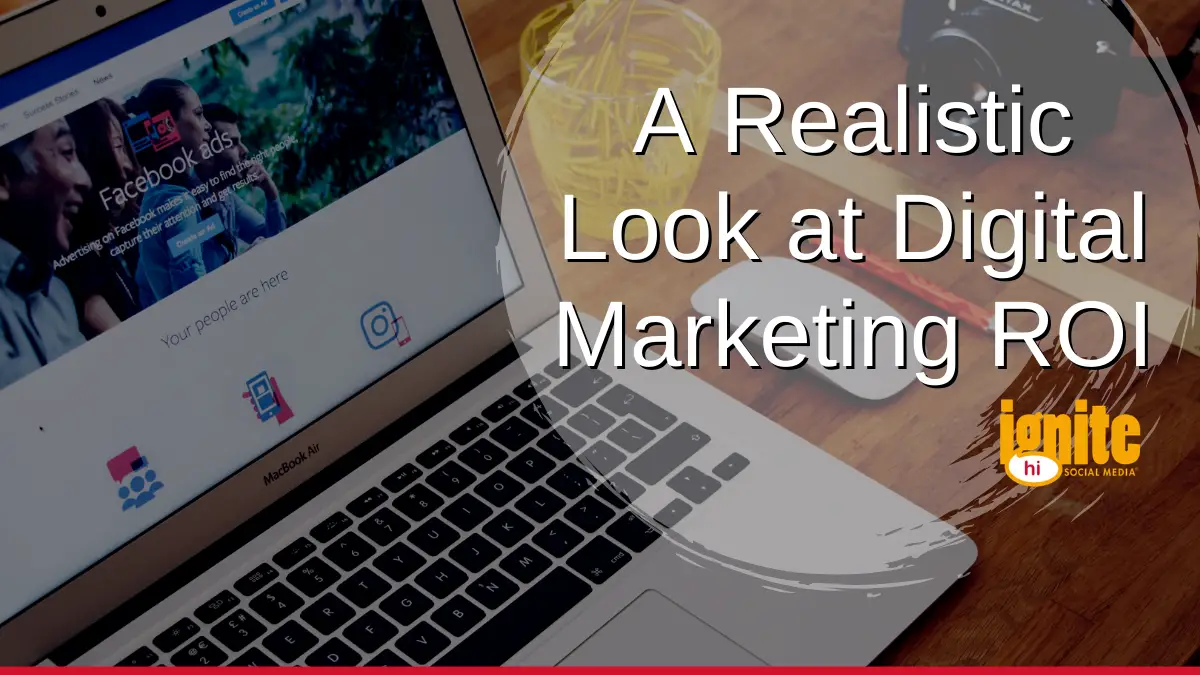
06 May A Realistic Look at Digital Marketing ROI
I’ve been working on nothing but social media marketing for brands since 2007 and one thing hasn’t changed. Brands are still typically in search of digital marketing ROI. Many brands want to know that if they invest, for example, $20,000 in a marketing program, they are going to drive more than $20,000 in sales.
Key Takeaways:
- Digital marketing ROI is getting harder to achieve on social media in part because so many new brands have flooded social networks.
- The smaller the budget a brand has, the less likely they are to achieve ROI or to be able to measure that ROI.
- Good marketing has both a short-term benefit (such as sales) and a long-term benefit (such as brand trust) that builds on itself.
The Definition of Marketing Return on Investment
Sadly, life isn’t that simple. If it were, we’d all continue to spend $20,000 every day and we wouldn’t stop until we were billionaires. Furthermore, the strict definition of digital marketing ROI is actually this:

Image credit: Harvard Business Review
In that image, you can see that true marketing ROI isn’t just driving more in sales than you spent, but it’s driving more in incremental value than you spent. You can read more about that in this article.
Why Digital Marketing ROI is Getting Harder to Achieve on Social Media
Budget Size
I often hear a small brand say, “I’d like to test this with $20,000 and if I get a positive ROI, then I’ll increase my budget.” Why does this never pan out? Several reasons.
First of all, while many of us individually spending our own $20,000 know that it’s a lot of money, in paid advertising, it’s a very small amount, even before agency fees and other ancillary costs. In 2019, advertisers in the United States alone spent $240 billion.
A test budget can be efficient if you know what you’re really testing. In almost every case, however, your test is not going to generate an immediate positive ROI.
Brand Trust
Over the last few years, thousands of pop up brands have flooded Instagram, Facebook and other social platforms selling low-quality products, often with month-long shipping times. At first, it worked well, but over time people realized the scam and CPC went up as general distrust of unknown brands increased.
If you have a well-known brand selling a quality product, clicks and conversions on social media can still be valuable. We have many clients driving real ROI from social programs. But if you add in the wrinkle of being a new or unknown brand, the obstacles to success get higher.
Playing the Long Game
Which retailers are the most successful in America today? Without a doubt, Walmart and Amazon are at the top of anyone’s list. They didn’t get there with quick, low dollar tests. They got their patiently, playing the long game and investing in logistics and technology that let them deliver a better experience.
While your brand likely doesn’t have the ability to be that patient, it is important to realize that each marketing investment can have two benefits. First, it has the ability to drive sales in the short-term. But second, it also builds the base of trust and brand recognition for the longer-term. That trust dividend gets more powerful the longer your brand exists.
True Marketing ROI is Difficult to Measure
I will never discourage a marketer from seeking a return on investment. We all should. But the best marketers also realize just how difficult generating, and measuring, that return really is. It takes a customized strategy and a customized measurement plan to make sure you’re making the right progress every step of the way.
If you are curious about the ROI of influencer programs, check out our post on setting expectations for your influencer marketing results.
If we can help you with that, we’d be honored. We’ve developed a lot of measurement models since 2007. One of them can likely be adapted to your brand needs.
Please use the form below if you would like to get in touch with us:






